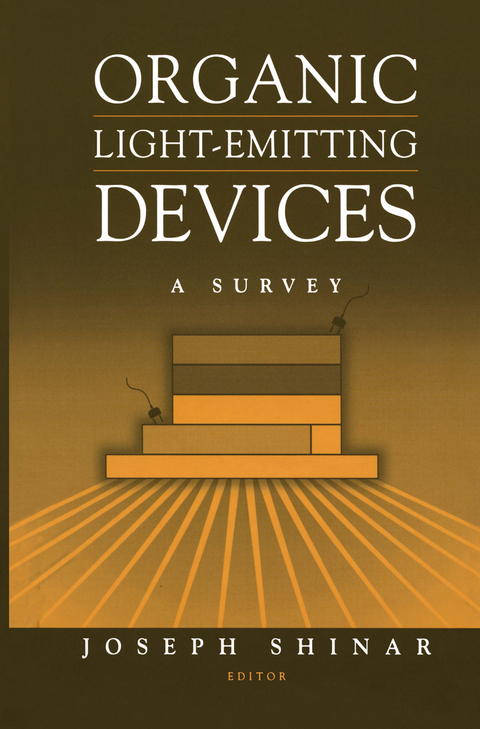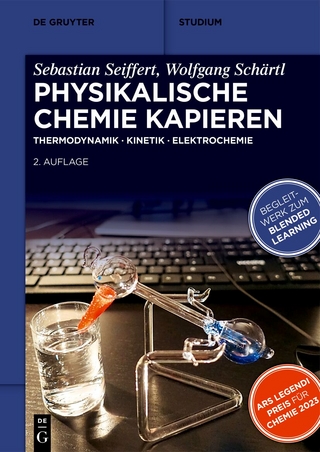
Organic Light-Emitting Devices
Springer-Verlag New York Inc.
978-1-4419-2960-0 (ISBN)
1 Introduction to Organic Light-Emitting Devices.- 1.1 Introduction.- 1.2 Basic Electronic Structure and Dynamics of ?-Conjugated Materials.- 1.3 Basic Structure of OLEDs.- 1.4 OLED Fabrication Procedures.- 1.5 Materials for OLEDs & PLEDs.- 1.6 Basic Operation of OLEDs.- 1.7 Carrier Transport in OLEDs.- 1.8 The Efficiency of OLEDs.- 1.9 Degradation Mechanisms.- 1.10 Outlook for OLEDs.- References.- 2 Molecular LED: Design Concept of Molecular Materials for High-Performance OLED.- 2.1 Introduction.- 2.2 OLED Development from the 1960s to the 1980s.- 2.3 Working Mechanisms of OLED.- 2.4 Design of Multilayer Structures.- 2.5 Molecular Materials for OLED.- 2.6 Future Possibilities of OLED.- 2.7 Conclusion.- References.- 3 Chemical Degradation and Physical Aging of Aluminum(III) 8-Hydroxyquinoline: Implications for Organic Light-Emitting Diodes and Materials Design.- 3.1 Introduction.- 3.2 Chemical Stability of OLED Materials.- 3.3 Morphological Stability of Organic Glasses in LEDs.- 3.4 The Effect of Aging Processes on OLED Performance.- References.- 4 Organic Microcavity Light-Emitting Diodes.- 4.1 Introduction.- 4.2 Types of Microcavities.- 4.3 Planar Microcavity LEDs.- 4.4 Single Mode and Multimode Planar Microcavity LEDs.- 4.5 Intensity and Angular Dependence in Planar Microcavities.- 4.6 Materials for Organic Microcavity LED Displays.- 4.7 Summary.- References.- 5 Light-Emitting Diodes Based on Poly(p-phenylenevinylene) and Its Derivatives.- 5.1 Introduction.- 5.2 The Electronic Structure of PPV.- 5.3 Synthesis of PPV and Derivatives.- 5.4 Single-Layer LEDs.- 5.5 Multiple-Layer Polymer LEDs.- 5.6 Transport and Recombination in Polymer LEDs.- 5.7 Optical Properties of Polymer LEDs.- 5.8 Novel LED Structures.- 5.9 Prospects for Applications of PPV-Based LEDs.- 5.10Conclusions.- References.- 6 Polymer Morphology and Device Performance in Polymer Electronics.- 6.1 Introduction.- 6.2 The Control of Polymer Morphology.- 6.3 The Control of Device Performance via Morphology Control..- 6.4 Conclusions.- References.- 7 On the Origin of Double Light Spikes from Polymer Light-Emitting Devices.- 7.1 Introduction.- 7.2 Experimental.- 7.3 Results and Analysis.- 7.4 Discussion.- 7.5 Conclusions.- References.- 8 Electroluminescence with Poly(para-phenylenes).- 8.1 Introduction.- 8.2 Physical Properties of Oligophenyls and Polyphenyls.- 8.3 Electroluminescence.- 8.4 Conclusions.- References.- 9 Direct and Alternating Current Light-Emitting Devices Based on Pyridine-Containing Conjugated Polymers.- 9.1 Introduction.- 9.2 Experiments.- 9.3 Results and Discussion.- 9.4 Summary and Conclusion.- References.- 10 Polyfluorene Electroluminescence.- 10.1 Introduction.- 10.2 Synthesis and Characterization of Polyfluorene.- 10.3 Electroluminescence.- 10.4 Concluding Remarks.- References.
| Zusatzinfo | 33 Illustrations, black and white; XVI, 309 p. 33 illus. |
|---|---|
| Verlagsort | New York, NY |
| Sprache | englisch |
| Maße | 155 x 235 mm |
| Themenwelt | Naturwissenschaften ► Chemie ► Physikalische Chemie |
| Naturwissenschaften ► Physik / Astronomie ► Atom- / Kern- / Molekularphysik | |
| Naturwissenschaften ► Physik / Astronomie ► Festkörperphysik | |
| Naturwissenschaften ► Physik / Astronomie ► Optik | |
| Naturwissenschaften ► Physik / Astronomie ► Thermodynamik | |
| Technik ► Elektrotechnik / Energietechnik | |
| Technik ► Maschinenbau | |
| ISBN-10 | 1-4419-2960-6 / 1441929606 |
| ISBN-13 | 978-1-4419-2960-0 / 9781441929600 |
| Zustand | Neuware |
| Informationen gemäß Produktsicherheitsverordnung (GPSR) | |
| Haben Sie eine Frage zum Produkt? |
aus dem Bereich


